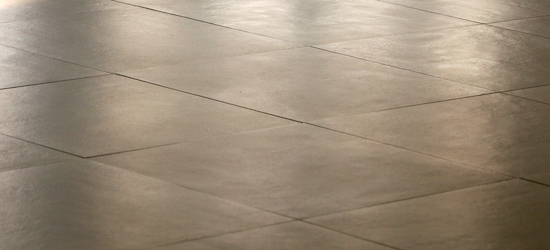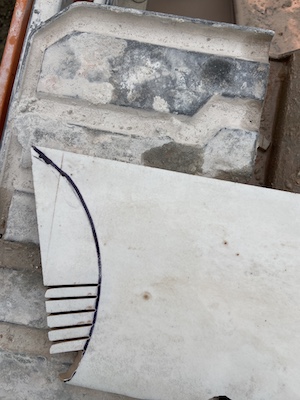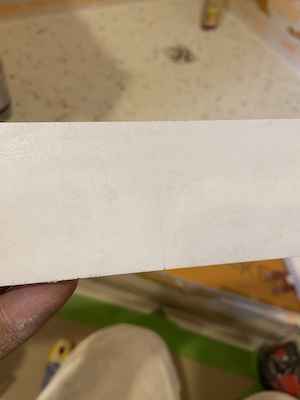QUESTION
I am in the field and have come across an issue. I remember hearing Mark Heinlein speak one time and he mentioned flipping the tiles over and measuring the distance between the tile face. I am dealing with an extremely bowed tile. I guess that’s the look? Anyway some of the 8″x24″ tile selected by the designer for the shower walls measures up to a 3/8″ difference between faces. How does this information inform my layout? What’s the best way to temper expectations?
I also noticed while working with this crooked and warped material that while running it through a wet saw these imperceptible cracks would appear and would collect the ink or run off. Do these cracks compromise my tile installation?
I also just have a general question and am seeking further information about concrete tiles. I have found them to be extremely frustrating both in setting and explaining to customers all the necessary care and hidden costs. I read manufacturers’ installation instructions, but do you have any other info or articles that could strengthen my knowledge of this material?
ANSWERS
NTCA Trainer Matt Welner called the member to talk about the situation. This was the outcome. – Ed.
We talked about ANSI A137.1 and what it says about allowable tolerances in the manufacturing process. We also discussed layout patterns, grout joint size and other best practices.
On the same job, he is being asked to install 8″x8″ concrete tile. These tiles vary in thickness and he is looking for info to pass on to his client about the extra care and maintenance required. I pointed him to the manufacturer instructions, we discussed a few pages in the NTCA Reference Manual and talked some best practices.
Later in the day he emailed again asking about the difficulties in cutting the 8″x24″ porcelain tile. It was chipping and cracking as he was cutting it. I called him back again to help guide him with some tips and tricks/best practices for hard to cut porcelain.
We talked about the manufacturing process of porcelain tile ANSI 137.1, switching from the wet saw to straight cutter, the speed of his cuts, the depth of his cuts, the blade he was using, the importance of dressing the blade and how to dress a blade.
He was very appreciative of the guidance we provided and he’s back at work this morning giving it another shot.
NTCA Executive Director Bart Bettiga also weighed in on this question – Ed.
I have had three different conversations with NTCA Consultant Members recently about the increasing problems they are seeing with the quality of much of the large-format tiles being produced, especially with plank tiles. This reminds me that more education on how to understand ANSI A137.1 to calculate for allowable lippage is important. In addition, TCNA offers NTCA members a discounted pricing option for having tiles tested in its International Product Assurance (IPA) lab, and this is something we should let our members know is available when and if these questions arise.
Our technical team can certainly make a connection to the IPA laboratories when we think our member might be served well in having the material tested for sizing and warpage etc.
This could help our members get paid, keep them out of trouble, or perhaps get a replacement tile submitted that would be easier to work with.
A full list of testing services is available at www.ipalaboratories.com. For questions, email [email protected] or call 864-646-8453.—Ed.









